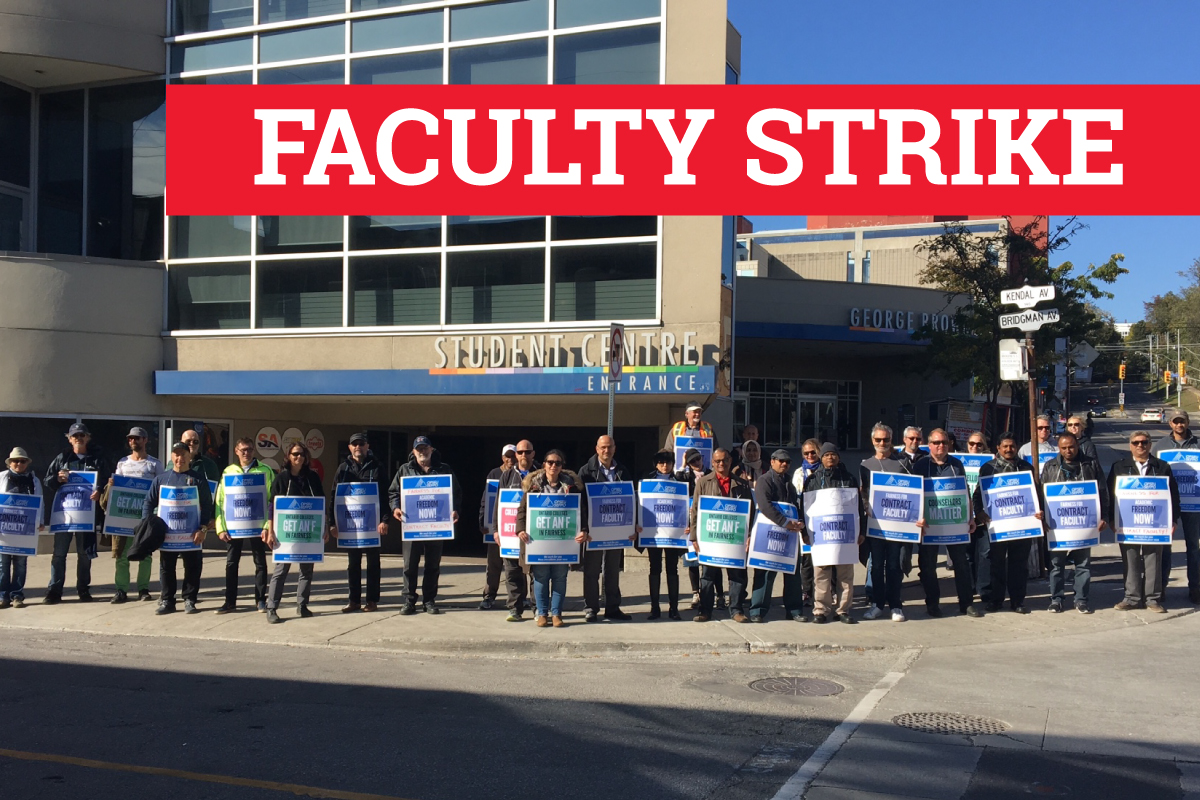Faculty strike averted at Ontario colleges as both sides agree to a deal! After weeks of tense negotiations, professors and college administrators have reached an agreement, averting a potentially disruptive strike that would have impacted thousands of students. This unexpected breakthrough follows a period of intense back-and-forth, with both sides making significant concessions to reach a compromise. Let’s delve into the details of this landmark agreement and its implications for Ontario’s college system.
The agreement covers key areas such as salary increases, workload adjustments, and improvements to job security for faculty. The concessions made by both sides are significant, indicating a willingness to find common ground. The timeline for implementation is crucial, and understanding how this agreement will be rolled out is vital for both faculty and students. A comparison to previous agreements will help contextualize this new deal and its long-term impact on labor relations within Ontario colleges.
So, the Ontario college faculty strike’s been avoided – both sides finally saw eye-to-eye. It makes you think about how different situations are handled; for example, check out this video, Video shows Mayor Karen Bass refuse to answer L.A. fires , which shows a very different approach to public accountability. Hopefully, this positive resolution in Ontario sets a better example for handling tough negotiations.
Ontario College Faculty Strike Averted: An Analysis of the Agreement: Faculty Strike Averted At Ontario Colleges As Both Sides Agree To
The recent averted faculty strike at Ontario colleges marks a significant development in post-secondary education labor relations. Both the faculty union and the college administration reached an agreement, preventing a potentially disruptive work stoppage. This analysis delves into the key provisions of the agreement, its impact on students and faculty, the negotiation process, and its broader implications for Ontario’s post-secondary education system.
The Agreement’s Key Provisions
The agreement reached between the Ontario college faculty and the administration addressed several key issues. Specific details regarding salary increases, workload adjustments, and improvements to job security were negotiated. Both sides made concessions; the faculty may have accepted a slightly lower salary increase than initially demanded, while the colleges likely agreed to more flexible workload arrangements than initially proposed.
Phew! That faculty strike at Ontario colleges is officially over; both sides reached a deal. Need a way to celebrate the good news? Check out this awesome giveaway: Three signed shirts up for grabs in bumper MyLFC giveaway ! It’s a great way to unwind after all that stressful negotiation. Hopefully, everyone can now focus on getting back to classes and a more peaceful semester.
The timeline for implementation includes phased increases in salary and benefits, with workload adjustments to be implemented over the next academic year. Compared to previous collective bargaining agreements, this one appears to incorporate a stronger emphasis on addressing faculty workload concerns, reflecting a shift in priorities.
Impact on Students

The averted strike significantly impacts students’ academic experience. The immediate effect is the continuation of uninterrupted classes and academic programming. Long-term implications include potential improvements in course quality and program delivery due to addressed faculty workload concerns. For example, the agreement might lead to smaller class sizes or a reduction in the number of courses taught per faculty member, potentially enhancing student learning.
Conversely, some potential negative impacts may include adjustments in course scheduling, although this is expected to be minimal given the collaborative nature of the agreement.
| Positive Impacts | Negative Impacts |
|---|---|
| Uninterrupted classes and academic year | Potential minor adjustments to course schedules |
| Potentially improved course quality and smaller class sizes | Possible delays in implementation of some aspects of the agreement |
| Improved faculty morale, leading to better teaching | Unforeseen challenges in implementing new workload arrangements |
| Enhanced student learning experience | N/A |
Faculty Perspectives
Faculty expressed relief at the averted strike and generally positive sentiments regarding the agreement. While some concerns remain unaddressed, the agreement successfully addressed key issues such as workload and job security. The faculty’s rationale for accepting the agreement centers on the balance achieved between immediate improvements and the promise of future progress. The agreement offers a foundation for improved working conditions and enhanced student learning.
- “This agreement is a significant step forward in addressing our concerns about workload and job security.”
-Dr. Anya Sharma, Faculty Representative - “While not everything we wanted was achieved, this agreement provides a solid base for future improvements.”
-Professor Ben Carter, Faculty Member - “We are pleased that the disruption to students’ education has been avoided.”
– Professor Chloe Davis, Faculty Union Negotiator
College Administration’s Position

The college administration’s rationale for accepting the agreement stems from a desire to avoid a costly and disruptive strike. Key priorities achieved include maintaining stable operations and avoiding negative publicity. The financial implications of the agreement, while significant, are deemed manageable within the existing budget framework. The final agreement represents a compromise compared to their initial demands, balancing fiscal responsibility with the need to maintain a motivated and productive faculty.
The Negotiation Process, Faculty strike averted at Ontario colleges as both sides agree to
The negotiation process involved several stages, including initial proposals, counter-proposals, and mediation. Key stakeholders included the faculty union representatives, college administration, and government officials. Major sticking points centered on salary increases and workload adjustments. These were resolved through compromise and collaborative problem-solving, facilitated by mediation efforts.
So, the Ontario college faculty strike is officially off! Both sides reached a deal, which is great news for students. It’s a pretty big relief, almost as exciting as hearing that Wicked leads with 4 SAG Award nominations; live announcement ! Anyway, back to the colleges – hopefully, classes will resume smoothly now that the strike is over.
- March 2024: Initial contract negotiations begin.
- April 2024: Mediation begins.
- May 2024: Tentative agreement reached.
- June 2024: Ratification vote by faculty.
Broader Implications for Ontario’s Post-Secondary Education System

This agreement may influence future labor relations in Ontario’s college system and potentially set a precedent for other institutions. Similar situations in other provinces or countries, where faculty workload and compensation have been key bargaining points, provide context for this agreement. This agreement might encourage other faculty unions to prioritize workload concerns in future collective bargaining processes.
Visual Representation of Key Data
A bar graph could visually represent the percentage of faculty who voted in favor of the agreement. For example, if 85% voted in favor, the bar would reach 85% of the graph’s vertical axis. A pie chart could showcase the key financial aspects of the agreement, segmenting the budget allocation for salary increases, benefits improvements, and other provisions.
For instance, one segment might show 60% allocated for salary increases, 20% for benefits, and 20% for other improvements.
Epilogue

The averted faculty strike at Ontario colleges marks a significant turning point in labor relations within the post-secondary education sector. The agreement, born from compromise and negotiation, highlights the importance of collaborative problem-solving to ensure a positive learning environment for students. While challenges undoubtedly remain, the successful resolution of this dispute offers a hopeful precedent for future collective bargaining processes within Ontario’s colleges and potentially other provinces.
The agreement’s long-term effects will be closely watched, offering valuable lessons for navigating complex labor negotiations in higher education.
FAQs
What were the major sticking points in the negotiations?
Common sticking points often include salary increases, benefits, workload, and job security. Specific details would need to come from official reports on the negotiations.
How long did the negotiations last?
The duration of the negotiations will be detailed in news reports and official statements following the agreement.
What is the next step after the agreement?
The next step involves implementing the agreed-upon terms, likely including formalizing the contract and communicating the details to faculty and students.
Will this agreement affect other colleges in Ontario or other provinces?
It could set a precedent for future negotiations in Ontario and potentially influence discussions in other provinces, though each situation is unique.
